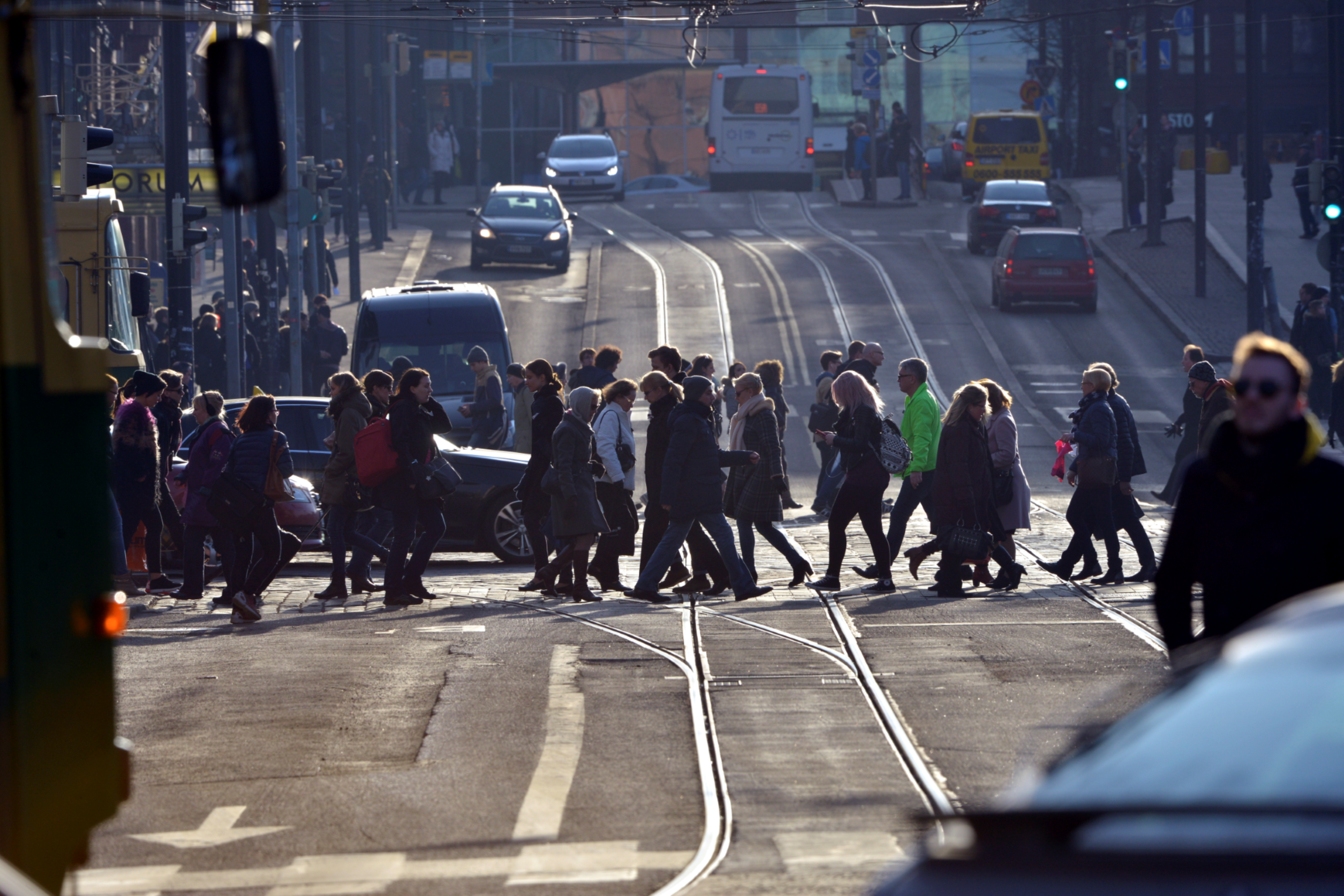Urbanisation is one of the key global megatrends, and its impacts can be observed in Finland as well. While about 30% of the world’s population lived in cities in 1950, the number in 2014 had increased to around 54%, and this figure is expected to rise to two thirds by the middle of this century.
The same trend is visible in Finland as well. Since the turn of the century, urban areas have been the target areas for net migration. The rise in the population of Helsinki underlines this development. While Helsinki had some 500,000 inhabitants in the 1980s, the number has now grown to more than 600,000, and the population is expected to exceed 750,000 by 2050.
Urbanisation is also closely linked with another central force of change of our times, climate change.
Cities consume more than two thirds of the world’s energy and produce more than 80% of CO2 emissions.
At the same time, more than 90% of the world’s urban regions are located on coastal areas, so they are exposed to the rises in sea levels and the increasingly powerful coastal storms.
However, cities have woken up to the challenges posed by climate change. Where states have been slower at adopting concrete measures in the fight against climate change, forerunner cities around the world – from Copenhagen to Vancouver – have stepped up, taking the leading role, and turned climate solutions into a source of growth, jobs and export revenues.
In the study Kaupunkien mestareiden liigaan (The Champions League of Cities; available in Finnish only), published on 9 January, the Helsinki Metropolitan Area is compared with other urban regions in the Baltic Sea area. The study strives to identify the critical bottlenecks and success factors of growth, and to propose measures for eliminating the obstacles to growth. The study calls for measures such as a metropolitan agreement to guarantee the long-term development of the Helsinki region, improvement of the transport connections and external accessibility, and to increase the internationality, recognition and attraction of the metropolitan area.
By investing in these elements, the Helsinki Metropolitan Area can increase its international competitiveness in comparison to other cities. And succeeding in this is critical not only for the Helsinki region, but also for the success of Finland as a whole.
We must invest in the conditions for growth
Finland needs an internationally competitive metropolitan area, but, on the other hand, Helsinki must also be capable of creating an inviting framework for high value-added products, services and solutions. The growing cities of the world and their increasing need for solutions for the mitigation of climate change and reduction of emissions offer an opportunity for this.
The study Sitra conducted in collaboration with the consulting company Frost & Sullivan predicts a bright future and annual markets amounting to up to 1,500 billion euros for “smart cities”. They combine low-emission and smart solutions in the fields of mobility, energy and infrastructure. The competition in the development and application of solutions is severe, but Finland and Finnish solutions have all the prerequisites for gaining their own share of these markets, if it plays its cards right.
Therefore, the metropolitan area should continue its investments in the development of internationally significant test beds in such fields as low-emission and smart traffic, energy, the built environment, the circular economy and consumer solutions. Helsinki’s international profile should be sharpened by making the cleanest and smartest circular economy city an internationally recognised city brand and a distinctive factor that builds the reputation of the Helsinki region and its ability to attract competent people and enterprises. With a view to success, the crucial thing is implementation, so it is important to ensure that all levels of the city organisation are committed to the goals and that no unnecessary obstacles to development emerge.
In their recent urban strategies, Helsinki, Espoo and Vantaa have taken commendable steps in the right direction and set ambitious targets for reducing emissions. Helsinki aims to become carbon neutral by 2035, Espoo and Vantaa as early as 2030. It is great that Helsinki wants to join the C40 Cities Climate Leadership Group and pays attention to the cleanness of energy production, energy efficiency of buildings and traffic emissions, in co-operation with enterprises and city dwellers. Co-operation carried out with the assistance of the Smart & Clean Foundation for the Helsinki Metropolitan Area between companies, the state and other towns in the metropolitan area is unique, even by international standards. Therefore, we can expect it to achieve impressive results. While we are developing solutions to ease the everyday lives of the Helsinki Metropolitan Area’s residents, the city can function as a platform for innovations that have international export potential.
I hope that the goals set in the urban strategies become concrete, not only in the form of actual reductions in emissions, but also as business opportunities for companies developing solutions and as better everyday lives for the residents. To ensure that we succeed in this, the strategies need to be supported by the ambitions of the cities, and they need state assistance for their implementation. The metropolitan agreement proposed in the new study would be an excellent tool for this.
















Recommended
Have some more.